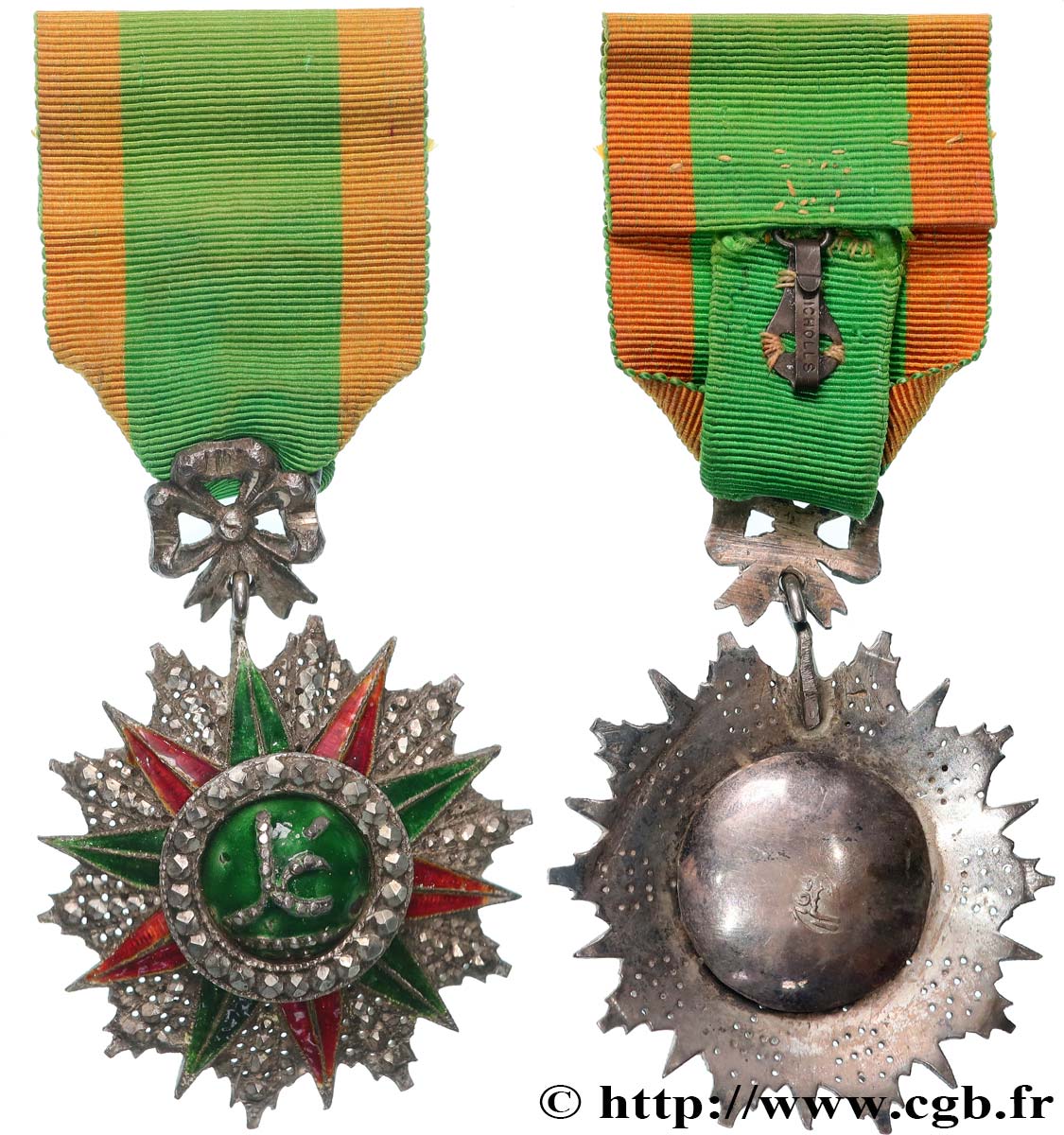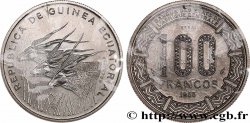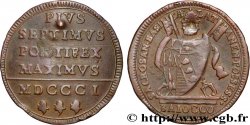fme_969197 - TUNESIEN - FRANZÖSISCHE PROTEKTORATE - ALI BEY Médaille, Ordre du Nichan al Iftikhar, Chevalier
150.00 €
Menge
In den Warenkorb

Type : Médaille, Ordre du Nichan al Iftikhar, Chevalier
Datum: n.d.
Metall : Silber
Durchmesser : 113 mm
Stempelstellung : 12 h.
Gewicht : 34,77 g.
Rand lisse
Punze : sans poinçon
Kommentare zum Erhaltungszustand:
Quelques manques d’émail. Taches d’oxydation au revers. Des rayures au revers également
Vorderseite
Titulatur der Vorderseite ANÉPIGRAPHE.
Beschreibung Vorderseite Caractères dans un médaillon central.
Rückseite
Titulatur der Rückseite LISSE.
Beschreibung Rückseite (marque ou poinçon dans le champ du médaillon).
Kommentare
Diamètre du médaillon : 60 mm, avec la bélière : 67,5 mm
Exemplaire émaillé de rouge et vert avec des rayons ciselés à facette entre chaque bras, le médaillon central porte des caractères arabes sur un fond d’émail vert. Il est tenu par un noeud en fleur et retenu par un ruban jaune et vert (qui ne semble pas être d’origine d’environ 38,5 mm de largeur) qui s’accroche grâce à une attache métallique.
Cette décoration avait été instituée en 1835 par Ahmad I ibn Mustafa, Bey de Tunis et réformé en 1857 par son successeur Muhammad II ibn al-Husayn.
Medallion diameter: 60 mm, with bail: 67.5 mm Red and green enamelled copy with faceted chiseled rays between each arm, the central medallion bears Arabic characters on a green enamel background. It is held by a flower knot and retained by a yellow and green ribbon (which does not appear to be original, approximately 38.5 mm wide) which is attached with a metal fastener. This decoration was instituted in 1835 by Ahmad I ibn Mustafa, Bey of Tunis and reformed in 1857 by his successor Muhammad II ibn al-Husayn
Exemplaire émaillé de rouge et vert avec des rayons ciselés à facette entre chaque bras, le médaillon central porte des caractères arabes sur un fond d’émail vert. Il est tenu par un noeud en fleur et retenu par un ruban jaune et vert (qui ne semble pas être d’origine d’environ 38,5 mm de largeur) qui s’accroche grâce à une attache métallique.
Cette décoration avait été instituée en 1835 par Ahmad I ibn Mustafa, Bey de Tunis et réformé en 1857 par son successeur Muhammad II ibn al-Husayn.
Medallion diameter: 60 mm, with bail: 67.5 mm Red and green enamelled copy with faceted chiseled rays between each arm, the central medallion bears Arabic characters on a green enamel background. It is held by a flower knot and retained by a yellow and green ribbon (which does not appear to be original, approximately 38.5 mm wide) which is attached with a metal fastener. This decoration was instituted in 1835 by Ahmad I ibn Mustafa, Bey of Tunis and reformed in 1857 by his successor Muhammad II ibn al-Husayn








 Berichten über einen Fehler
Berichten über einen Fehler Die Seite drucken
Die Seite drucken Teilen meiner Auswahl
Teilen meiner Auswahl Stellen Sie eine Frage
Stellen Sie eine Frage Einlieferung/Verkauf
Einlieferung/Verkauf
 Details
Details










